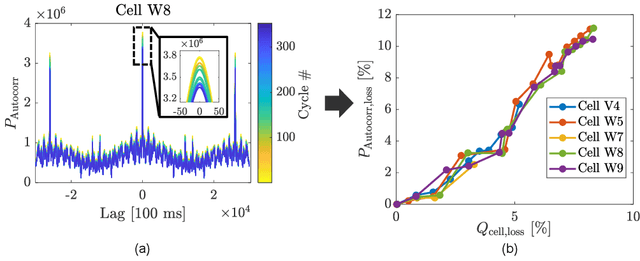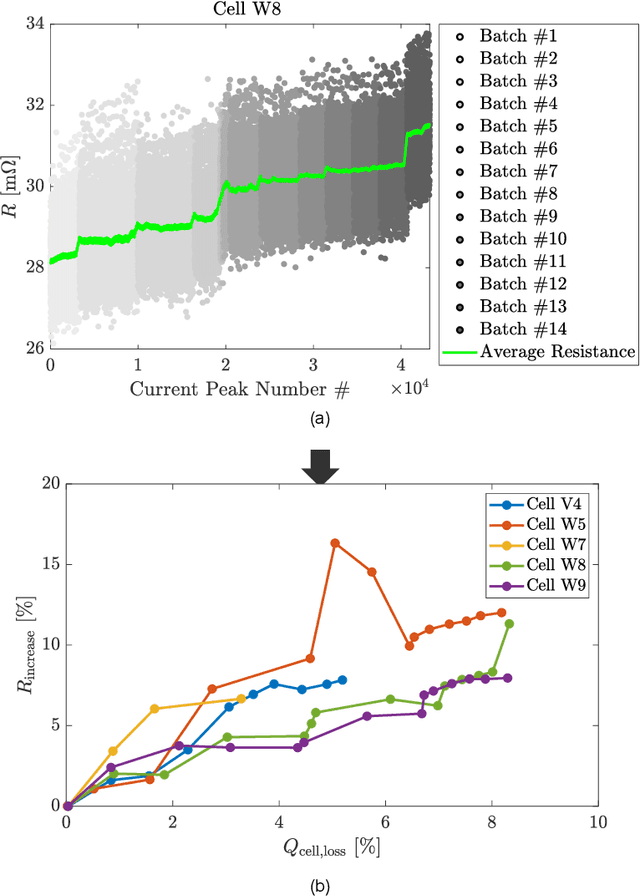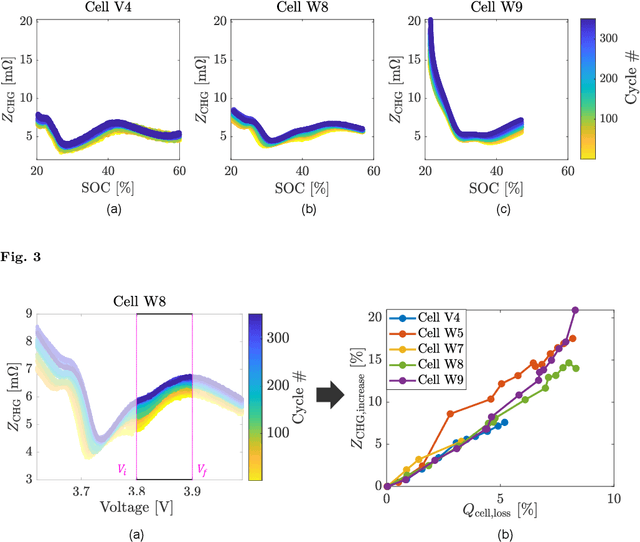Anirudh Allam
Domain knowledge-guided machine learning framework for state of health estimation in Lithium-ion batteries
Sep 22, 2024



Abstract:Accurate estimation of battery state of health is crucial for effective electric vehicle battery management. Here, we propose five health indicators that can be extracted online from real-world electric vehicle operation and develop a machine learning-based method to estimate the battery state of health. The proposed indicators provide physical insights into the energy and power fade of the battery and enable accurate capacity estimation even with partially missing data. Moreover, they can be computed for portions of the charging profile and real-world driving discharging conditions, facilitating real-time battery degradation estimation. The indicators are computed using experimental data from five cells aged under electric vehicle conditions, and a linear regression model is used to estimate the state of health. The results show that models trained with power autocorrelation and energy-based features achieve capacity estimation with maximum absolute percentage error within 1.5% to 2.5% .
Second-life Lithium-ion batteries: A chemistry-agnostic and scalable health estimation algorithm
Mar 08, 2022



Abstract:Battery state of health is an essential metric for diagnosing battery degradation during testing and operation. While many unique measurements are possible in the design phase, for practical applications often only temperature, voltage and current sensing are accessible. This paper presents a novel combination of machine learning techniques to produce accurate predictions significantly faster than standard Gaussian processes. The data-driven approach uses feature generation with simple mathematics, feature filtering, and bagging, which is validated with publicly available aging datasets of more than 200 cells with slow and fast charging, across different cathode chemistries, and for various operating conditions. Based on multiple training-test partitions, average and median state of health prediction root mean square error (RMSE) is found to be less than 1.48% and 1.27%, respectively, with a limited amount of input data, showing the capability of the approach even when input data and time are limiting factors. The process developed in this paper has direct applicability to today's incumbent open challenge of assessing retired batteries on the basis of their residual health, and therefore nominal remaining useful life, to allow fast classification for second-life reutilization.
 Add to Chrome
Add to Chrome Add to Firefox
Add to Firefox Add to Edge
Add to Edge